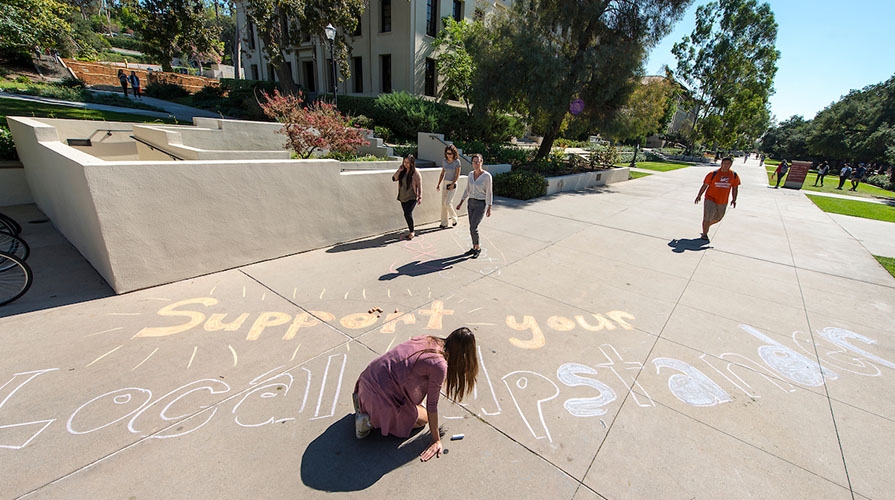
Project SAFE is dedicated to ending sexual violence on Oxy’s campus through a series of frameworks informed by the public health model of prevention. Through these frameworks, we are able to provide comprehensive prevention education as well as advocacy and healing programs that center safety and autonomy. Combined these components allow us to address primary, secondary, and tertiary levels of prevention providing a comprehensive approach in service of our mission.
Project SAFE staff, which includes our Director, Prevention Education & Program Manager, Survivor Advocate, and Peer Advocates (PAs), provide various training and programs throughout the academic year. Peer Advocates present training to Oxy Athletics teams, Greek Organizations, and other student groups. Project SAFE also organizes campus-wide programs that educate the community about sexual and interpersonal violence and provide opportunities for healing from trauma. Empowerment Week, held annually in October, is dedicated to preventing and healing from dating and interpersonal violence. Take Back the Week, held annually in April, explores intersectionality and sexual violence to raise awareness that sexual violence affects everyone, regardless of gender, race, or orientation.
The Social-Ecological Model
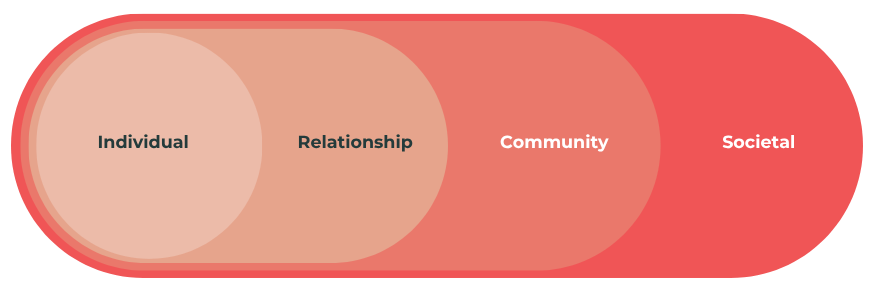
The Social-Ecological Model considers the complex interplay between individual, relationship, community, and societal factors. It allows us to understand the range of factors that put people at risk for violence as well as factors that protect people from experiencing or perpetrating violence. The overlapping rings in the model illustrate how factors at one level influence factors at another level. (Center for Disease Control and Prevention, 2022)
Individual
The first level identifies personal and historical factors that increase the likelihood of becoming a victim and/or perpetrator of violence. Some of these factors may be assigned sex, gender, age, education, income, substance use, or history of abuse.
Prevention strategies at this level look like promoting attitudes, beliefs, and behaviors that prevent violence. Specific approaches may include early consent education, social-emotional learning, and safe dating and healthy relationship skill programs.
Relationship
The second level examines close relationships that may increase the risk of experiencing violence as a victim or perpetrator. A person’s closest social circle-peers, partners, and family members influence their behavior and contribute to their experience.
Prevention strategies at this level may include mentoring and peer programs designed to strengthen communication, promote positive peer norms, accountability, problem-solving skills and healthy relationships.
Community
The third level explores the settings, such as schools, workplaces, and neighborhoods, in which social relationships occur and seeks to identify the characteristics of these settings that are associated with becoming victims or perpetrators of violence.
Prevention strategies at this level focus on improving the physical and social environment in these settings (e.g., by creating safe places where people live, learn, work, and play) and by addressing other conditions that give rise to violence in communities.
Society
The fourth level looks at the broad societal factors that help create a climate in which violence is encouraged or inhibited. These factors include social and cultural norms that support violence as an acceptable way to resolve conflicts. Other large societal factors include the health, economic, educational, and social policies that help to maintain economic or social inequalities between groups in society.
Prevention strategies at this level include efforts to promote societal norms that protect against violence as well as efforts to strengthen household financial security, education and employment opportunities, and other policies that affect the structural determinants of health.
Forms of Prevention

Primary Prevention: Education
Primary forms of prevention aims to prevent sexual violence from occurring in the first place.
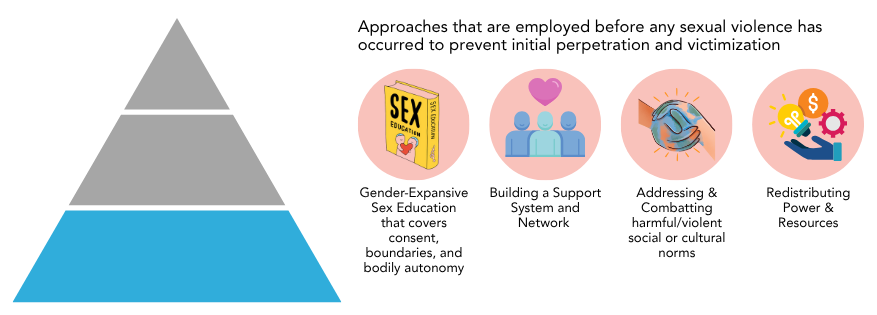
At Project SAFE, we provide primary prevention educational programs, workshops, and training such as:
- First Year Orientation
- How To Support Survivors & Trauma-Informed Care
- Practice Consent and Boundaries
- How to Be an Upstander
- Creating Survivor Centered Spaces
- Consent-Based Workshops
- Healthy Relationships
- Student Athlete and Greek Life Training
- Faculty and Staff Training
- Highlighting Interpersonal Violence (IPV) Month in October with Empowerment Week
- Highlighting Sexual Assault Awareness Month (SAAM) in April with Take Back the Week
Secondary Prevention: Advocacy
Secondary forms of prevention provides immediate response after violence has occurred.
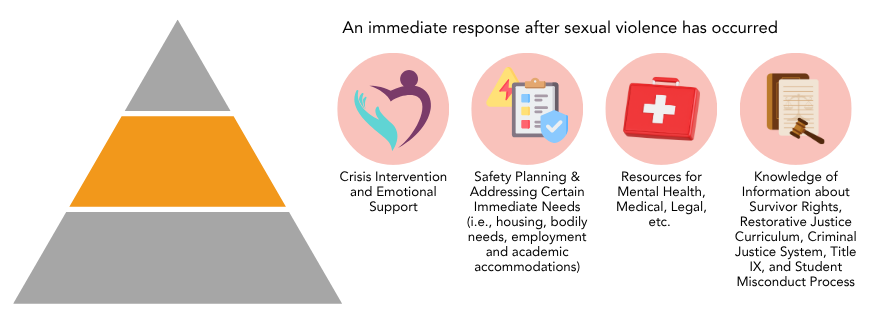
The Project SAFE office provides advocacy services for those who have experienced violence, such as but not limited to:
- Crisis intervention and emotional support
- Resources and referrals for counseling, medical, legal, and other resources as needed
- Developing a safety plan
- Addressing housing, academic, and employment concerns
- Mapping and reaching out to support network
- Navigating the criminal justice system, Title IX, and/or the Student Conduct process
- Accompaniment to Title IX, Student Conduct meetings, hearings, medical centers, and/or police
- Healing and Empowerment
Tertiary Prevention: Trauma-Informed Healing
Tertiary forms of prevention provide long-term support for survivors and address the lasting effects of trauma.
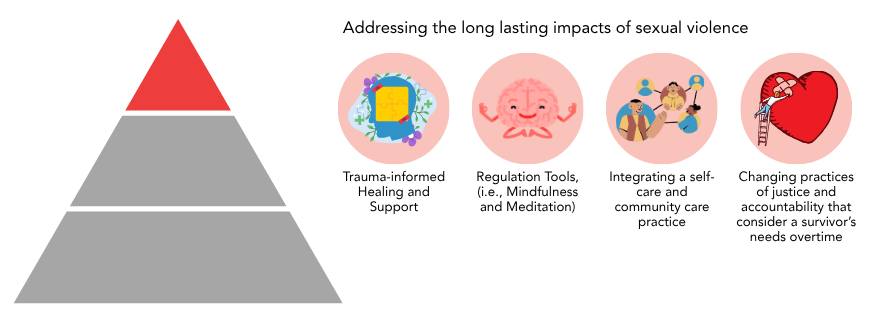
This includes:
- Trauma-informed healing and support
- Mindfulness and meditation
- Sustaining a support system
- Joining a network of survivor support and accessing resources over time
- Listening to and being in solidarity with survivors
- Changing practices of justice and accountability that consider a survivor's needs over time
Prevention Education Resources
- Sexual Violence Prevention: Beginning the Dialogue (CDC, 2004)
- Risk and Protective Factors (NSVRC, 2019)
- Open Letter to the Anti-Rape Movement (Santa Cruz Women Against Rape, 1977)
